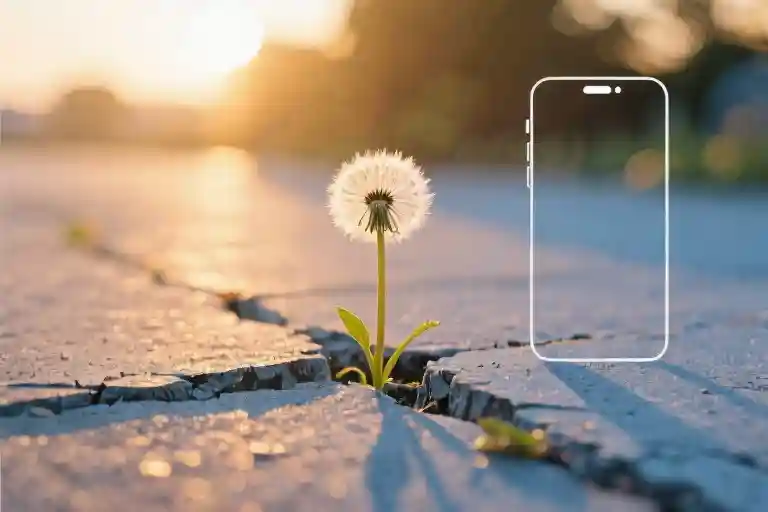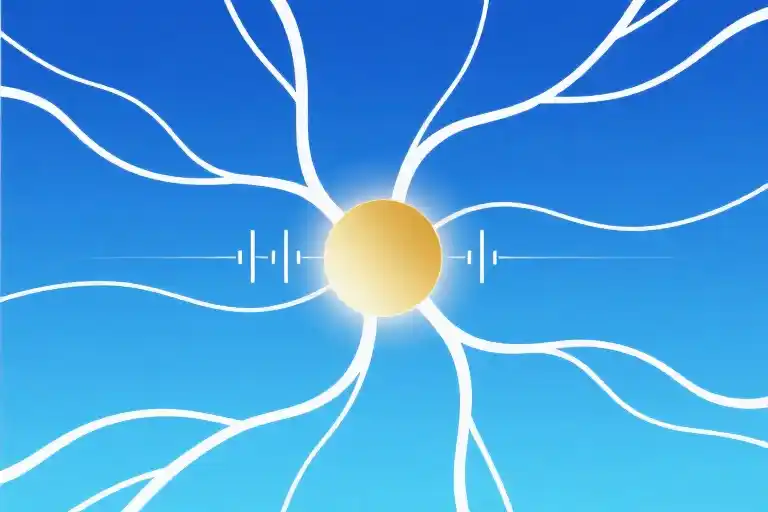The glow of my phone screen burns at 2:47 AM as another engagement announcement flashes by. Then a promotion post. Then someone’s ‘humble brag’ about closing their first investment property. My thumb keeps scrolling through this highlight reel of other people’s lives while my own eyelids grow heavy with something thicker than sleep.
We’ve all taken this unofficial diagnostic test in the dark. Check any that apply:
- That tightness in your chest when someone your age hits a milestone you haven’t
- The mental spreadsheet where you calculate how many ‘life points’ you’re behind
- The phantom vibration of imagined judgment every time you choose rest over hustle
Here’s the uncomfortable truth your LinkedIn feed won’t show you: statistically, about 90% of us will live remarkably ordinary lives. Not failure stories—just human-scale ones where the grand plot twists never arrive. The system promised us that effort automatically converts to extraordinary outcomes, but the data shows most conversion rates hover around basic survival with occasional sparks of joy.
This isn’t about lowering standards. It’s about questioning why we accepted a definition of success that feels like running on a cosmic treadmill—where the finish line moves faster than our legs. The real epidemic isn’t failing to ‘make it,’ but believing we’re failures for inhabiting the perfectly normal lives that statistically most humans throughout history have actually lived.
The FOMO Clinic: Diagnosing Our Obsession With Missing Out
The notification buzzes at 2:37 AM. Again. Your thumb moves automatically before your brain fully wakes – swiping through another’s tropical vacation, engagement announcement, promotion post. That familiar hollow feeling spreads through your chest cavity. We’ve all been patients in this emergency room of comparison.
Modern life has engineered three distinct strains of FOMO (Fear of Missing Out) that hijack our nervous systems:
1. The Highlight Reel Virus
Our brains didn’t evolve to process curated perfection. When we consume 87% of our peers’ best moments (according to Cornell social media studies) while experiencing 100% of our own mundane reality, neural circuitry short-circuits. The prefrontal cortex literally cannot compute this imbalance.
2. The Timeline Contagion
That internal spreadsheet comparing life milestones? Completely fabricated. Research from Harvard’s Happiness Lab reveals humans are terrible at predicting what will actually bring satisfaction. Yet we keep chasing arbitrary deadlines like “should be married by 30” or “must make six figures by 35.”
3. The Opportunity Phantom
This mutation makes us see potential in every path not taken. Stanford neuroscientists found that merely imagining alternative scenarios triggers the same dopamine release as actual achievements. Our reward systems can’t distinguish between real accomplishments and fantasy projections.
Here’s what’s happening biologically: Each scroll, comparison, and “what if” thought floods our synapses with dopamine – not the satisfying kind, but the craving variety that keeps lab rats pressing levers. It’s the neurological equivalent of eating saltwater when thirsty. The more we consume, the more dehydrated we become.
Self-Assessment: Your Comparison Addiction Score
- Do you feel physical tension when seeing others’ achievements? (5pts)
- Have you ever postponed joy because “it’s not the right time”? (3pts)
- Do hypothetical future scenarios occupy >30% of your mental space? (7pts)
Score 0-5: Occasional symptom flare-ups
6-12: Moderate case requiring awareness
13+: Immediate dopamine detox recommended
This isn’t about blaming ourselves. These symptoms emerge from perfectly functional brains reacting to profoundly dysfunctional environmental inputs. Like canaries in coal mines, our anxiety signals systemic toxicity rather than personal failure.
The treatment begins with recognizing these thought patterns as foreign agents rather than personal truths. Tomorrow we’ll examine how society weaponizes our neural wiring – and how to reclaim your cognitive sovereignty.
The Demolition Crew for Your Mind
We’ve been handed a blueprint for life since childhood – the straight line from effort to reward. Study hard, get good grades, land a prestigious job, climb the ladder, buy the house, retire comfortably. This linear progress myth persists because it’s comforting, like believing every story needs a three-act structure. But real careers don’t plot neatly on graphs. They zig when you expect zag, plateau when you anticipate ascents, and occasionally nosedive without warning.
The jagged trajectory of actual professional growth reveals something profound: our most valuable developments often come disguised as setbacks. That lateral move that felt like stagnation? It built unexpected skills. The project failure? Forged resilience no success could teach. These aren’t deviations from the path – they are the path. When we stop measuring our journey against imaginary straight lines, we begin seeing the fractal beauty in our unique growth patterns.
Milestone Mirage
Consider the emotional aftermath of so-called life achievements. Research on post-promotion satisfaction shows a curious pattern – the initial dopamine spike lasts about three weeks before baseline happiness resets. Wedding planners know this secret too well, which is why they sell ‘honeymoon phase’ extensions. We keep chasing these cultural finish lines, only to discover they’re painted on the horizon, always receding.
This isn’t to diminish accomplishment, but to liberate us from their tyranny. When we stop seeing milestones as destinations and recognize them as particularly scenic rest stops, we reclaim the right to enjoy the entire journey. The promotion becomes one moment among many, not the validation our entire career hinges upon.
The Social Media Detox Experiment
Here’s a thought experiment: imagine waking tomorrow to find all social platforms permanently deleted. No LinkedIn to compare career trajectories, no Instagram to measure lifestyles against. Who would you be without these external reference points? The initial panic this idea provokes reveals how thoroughly we’ve outsourced our self-worth metrics.
Try this: for one day, document every time you instinctively reach for comparison. The colleague’s job change announcement that makes your stomach drop. The friend’s vacation photos that trigger restlessness. These aren’t innocent observations – they’re thefts of your present moment. Each comparison steals attention from what’s actually happening in your life right now, trading real experience for imaginary deficits.
The most radical act of self-preservation might be developing an entirely personal success vocabulary – one that doesn’t borrow definitions from trending hashtags or viral posts. When we stop letting algorithms dictate our aspirations, we might discover ambitions we never knew we had, quiet but persistent ones that got drowned out by the noise of everyone else’s highlight reels.
The Banality Lab Notebook
The experiment began with a Tuesday afternoon that felt like every other Tuesday. I sat on a park bench that still carried the morning’s rain in its grooves, watching a battalion of ants navigate the cracked concrete. Their determined procession between a dropped ice cream cone and some unseen colony should have been mundane. But for the first time in years, I noticed how sunlight refracted through a water droplet on one ant’s back, creating a prism that existed for exactly three seconds before evaporating.
This was Day 3 of my Anti-Ambition Protocol – seven days of deliberately not pursuing anything remarkable. No productivity hacks, no skill-building, no networking. Just existing within the unedited footage of life rather than constantly editing myself into a more impressive narrative.
Case Study: The Spreadsheet Artist
Among the reader submissions to our informal study, accountant Michelle’s story stood out. For twelve years, she’d secretly transformed Excel sheets into pixel art during lunch breaks – intricate mosaics of colored cells depicting everything from Van Gogh’s Starry Night to her cat Mr. Whiskers. Not a single colleague knew about this private gallery living in shared company drives.
“They’re just silly doodles,” her email began. “But last month when our CFO accidentally opened the wrong file during a budget meeting, instead of getting fired, three people asked for custom portraits. Now we have a clandestine art collective meeting in the break room every Thursday.”
Her story revealed the quiet rebellion possible within ordinary routines. The corporate spreadsheet – ultimate symbol of capitalist efficiency – had become her canvas. This wasn’t hustle culture’s version of “side hustle” but something purer: creation divorced from monetization or external validation.
The Boredom-Creativity Paradox
Our lab’s most surprising finding emerged from tracking participants’ self-reported “boredom levels” against creative output. Counter to cultural assumptions, those who allowed themselves to feel genuinely bored (without reaching for digital distraction) began noticing:
- Unusual pattern recognition (e.g., seeing faces in peeling wallpaper)
- Heightened sensory awareness (identifying 7 distinct coffee shop sounds)
- Spontaneous problem-solving (a barista inventing latte art during slow hours)
Neuroscience explains this through the default mode network – brain regions that activate when we’re not focused on external tasks. Like a theater’s backstage crew, these areas assemble unexpected connections while we’re ostensibly “doing nothing.” The modern obsession with constant stimulation essentially keeps this creative team locked in the supply closet.
Field Notes from the Ordinary
What follows are unedited excerpts from our experiment logs:
Day 4 – 3:17PM
Noticed the barista always hums in B-flat when steaming milk. The man reading Proust by the window has turned 43 pages in two hours. My tea has formed a galaxy of leaves at the bottom of the cup. These observations feel more substantive than yesterday’s LinkedIn scroll.
Day 6 – 11:42AM
The office printer has a distinct rhythm – like a jazz drummer playing “Take the A Train” at 3/4 speed. Three coworkers have unconsciously started bobbing their heads to its malfunctioning beat. We’re all participating in an avant-garde performance none of us planned.
The data suggests something radical: what we dismiss as banal might actually be fertile ground. When we stop treating the present as raw material for some future masterpiece, we begin noticing the masterpiece that’s already playing – in the ant trails, the spreadsheet cells, the printer’s stuttering song.
Survival Toolkit for the Ordinary Life
When the weight of comparison culture becomes unbearable, it’s time to arm ourselves with unconventional weapons. These aren’t tools for climbing ladders, but for digging deeper into the soil beneath our feet.
The Meaning Microscope
Turn your daily commute into an archaeological dig. That coffee stain on your notebook? A fossilized record of Tuesday’s rushed morning. The cracked pavement you step over each afternoon? A geological fault line telling stories of urban expansion. This practice isn’t about manufacturing significance – it’s about noticing what’s already there.
Carry a small notebook (the analog kind) and document three mundane details daily. Not for social media, not for artistic merit, but as field notes from your personal excavation site. You’ll begin seeing patterns: how sunlight hits your desk at 3:17 PM creates liquid gold on your water glass, how your neighbor always hums the same tune when taking out the trash. These become the hieroglyphs of your ordinary civilization.
The Comparison Circuit Breaker
Modern life runs on comparison electricity – we’re constantly plugged into the grid of others’ highlight reels. Install physical interrupters: a sticky note on your phone saying “This isn’t reality” before opening Instagram, scheduled “off-grid” hours where you literally can’t access certain apps (try putting your router on a timer).
When you catch yourself mentally measuring against others, visualize slamming a vintage switchboard lever – complete with satisfying clunk sound effect. Create a “comparison jar” where you deposit a coin each time you interrupt the habit. Use the accumulated money to buy something purely impractical, reclaiming the mental energy capitalism tries to monetize.
Failure Commemorative Tokens
Collect physical mementos of your screw-ups like a numismatist of imperfection. That burnt dinner becomes a charred spoon display. The missed deadline transforms into a framed rejection email. Design actual metal tokens (or use poker chips) engraved with your flops – “Project Phoenix: Attempt 7” or “The Great Coffee Spill of ’23”.
Display them prominently. When guests ask, explain with pride: “This one represents the time I sent the wrong contract to a client and lived to tell the tale.” The tokens serve as tactile reminders that survival itself is an achievement. Eventually, you’ll notice – the shinier the failure, the better the story it makes.
These tools work precisely because they’re slightly ridiculous. They don’t promise transformation, just momentary relief from the tyranny of “more.” Like a child building forts from couch cushions, we’re constructing shelters from what’s already within reach – not to hide from life, but to finally see it clearly.
Mapping the Territory of Ordinary Life
The moment we stop measuring our days against someone else’s highlight reel, we begin to see the actual landscape we’ve been inhabiting all along. This isn’t the dramatic terrain promised by self-help gurus or productivity coaches—it’s something far more interesting.
Navigating the Swamp of External Validation
What we’ve been calling ‘failure’ often turns out to be perfectly good ground that just happens to lie outside other people’s valuation systems. The so-called ‘achievement gap’ between you and that college roommate turned startup founder? That’s not a chasm—it’s just different scenery.
Three danger zones to recognize:
- Comparison Quicksand: Where every LinkedIn update pulls you deeper into self-doubt
- Milestone Mirage: Those shimmering career goals that vanish when reached
- Productivity Trap: The false belief that busier equals more valuable
Five Outposts in the Plains of Routine
Building sustainable contentment requires establishing waystations in what we’ve mistakenly called ‘boring’ territory:
- The Observation Deck: Designate fifteen minutes daily to simply notice—the pattern of sunlight through blinds, the rhythm of your breathing
- The Curiosity Shelter: When envy arises, redirect it toward genuine interest in others’ paths without self-comparison
- The Stillness Station: Physical spaces (a chair, a park bench) where you practice existing without agenda
- The Memory Cache: Regularly revisit past ordinary moments that later revealed their significance
- The Boundary Marker: Clear indicators of when daily useful actions tip into compulsive striving
The Edges of the Map
Here’s the secret veteran explorers know—the most vital areas appear blank on conventional maps. That discomfort you feel when not working toward some grand goal? That’s the frontier where real discovery happens. The anxiety that whispers ‘you should be doing more’ isn’t a warning sign—it’s just uncharted territory becoming visible.
What culture calls ‘mediocrity’ is often simply the courage to inhabit your actual life rather than performing some improved version of it. The blank spaces beyond society’s success metrics aren’t voids—they’re breathing room we forgot we needed.
The Quiet Liberation of Being Ordinary
The screen dims as you reach the end of this unorthodox survival guide. No triumphant finale awaits, no twelve-step program to extraordinary living. Just Wittgenstein’s words hanging in the digital air like morning mist: Whereof one cannot speak, thereof one must be silent.
That silence might feel uncomfortable at first. We’ve been conditioned to expect fireworks at life’s grand finales – the career pinnacle, the perfect relationship, the viral achievement. But the most radical act may be stepping off that imagined red carpet and noticing the texture of your actual couch fabric beneath your fingers.
Consider this: When you wake tomorrow, will your first thought measure the distance between your life and some manufactured ideal? Or will it register the way sunlight fractures through your bedroom window, creating temporary constellations on the wall? The choice isn’t between ambition and complacency, but between living inside borrowed narratives or discovering your own definition of enough.
Our weapons against success anxiety aren’t swords but magnifying glasses – tools to examine the microscopic wonders in what we’ve been trained to overlook. That client meeting where someone laughed at your joke. The way your neighbor’s rosemary plant survives against all odds. The particular weight of a library book in your hands. These aren’t consolation prizes for failing to ‘make it.’ They’re the uncut gems of authentic existence.
So here’s the real question, stripped of all social expectations and self-help jargon: Can you permit yourself to exist without justification? To value afternoons spent doing nothing ‘productive’ as much as career milestones? To stop treating your life like a rough draft waiting for its final polished version?
The coffee stain on this page (metaphorical or real) serves as a reminder – perfection was never the point. Your ordinary, unremarkable, beautifully flawed life isn’t preparation for something greater. It’s the main event. And unlike those Instagram highlight reels, you get to experience all the uncut footage – the mundane, the messy, the miraculously boring moments that no algorithm could ever curate.
Now close this tab. The world outside your window has been waiting patiently this whole time.





